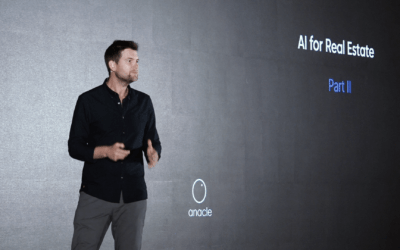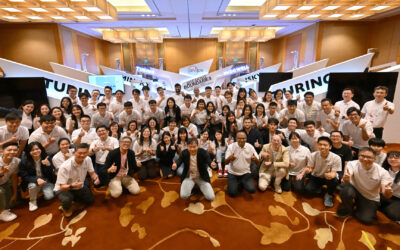Building Asset & Maintenance Management
Why Choose BAM?
A full-fledged solution that assists you in all aspects of building facilities management
Building Asset & Maintenance Management (BAM) Suite
The Simplicity® Building Asset & Maintenance Management Suite is a full-fledged solution that assists you in all aspects of building facilities management, including asset register setup and asset tracking, management of corrective and preventive maintenance regimes, as well as handling of tenant support activities and services.
It consists of five modules – Asset Management (AM), Maintenance & Field Service Management (WO), Safety Management (SAF), Tenant Services Management (TSM), and Failure Analysis (FMEA), supplemented with a comprehensive list of reports.
Although it is fully integrated to the other Simplicity® software suites, the Building Asset & Maintenance Management (BAM) Suite can also be deployed as a standalone facilities management application.
Asset Management (AM)
The Asset Management (AM) Module forms the foundation of the Suite. It maintains a comprehensive asset register, tracking all relevant asset data including equipment-specific parameters, maintenance plans, safety checklists as well as location-specific details.
The Asset Management (AM) Module supports a configurable asset hierarchy that allows for a logical grouping of locations and equipment so that real world asset taxonomies can be accurately captured. The Module provides users with the flexibility to browse and access asset data either from a functional system-based perspective or a physical location-based perspective.
Key features:
• Asset Ontology Setup
• Supports user definable asset data fields such as static attributes and dynamic parameters;
• Classify an asset as an equipment or instrument;
• Create fixed point, linear, or movable assets with configurable asset hierarchy;
• Generate unique asset ID based on user-definable formats with barcode, QR code, RFID and NFC support;
• Locate an asset via functional position or physical location;
• Define sub-assemblies within equipment;
• Asset Management
• Attach associated maintenance and occupational health checklists as well as spare parts lists to assets;
• Track utility consumption of assets;
• Manage asset loan/ return and transfer processes;
• Track equipment warranty and generate exception reports upon expiry of warranty;
• Perform asset sighting and tracking;
• Integration with Maintenance & Field Service Management (WO) Module allows automated logging and tracking of equipment defects;
• Perform annual sighting of assets enable user to maintain accurate assets data;
• All asset management functions can be accessed in the field using the Mobile App (m-AM) extension.
Maintenance & Field Service Management
The Maintenance & Field Service Management (WO) Module is where all maintenance, inspection and engineering work activities, both ad-hoc and scheduled, are managed and tracked. It provides support for the creation and management of the entire work order process, including ensuring conformance to specific job plans for fault resolution. The configurable work order processes seamlessly integrate with disparate data sources containing information about facilities, equipment, materials, labor rates, budgets, etc. to provide state of the art maintenance and field service management functionality.
Key Features:
• Supports configurable ad-hoc and scheduled work order processes;
• Generate unique work order numbers based on user-definable formats;
• Corrective Maintenance Management
• Receive cases from the Helpdesk Case Management Module raised by Customer Service Operators (“CSO”); CSOs can similarly track problem resolution within the system;
• Raise work orders against all types of assets (locations/ equipment);
• Preventive Maintenance Management
• Effectively plan work based on projected labor and material requirements;
• Use sophisticated scheduler for planning of preventive maintenance and inspection activities, taking into account of material availability and holidays;
• Perform comprehensive building audits;
• Automated generation of maintenance circulars to inform stakeholders of equipment shutdown and servicing;
• Condition-based Maintenance Management
• Define Fault Detection & Diagnosis (FDD) rules including condition triggers; automatically generate work orders when these rules are breached;
• Listen to and receive conditions, events and alarms from external OT systems via OT clients (e.g. OPC);
• Perform condition-based maintenance with condition triggers on asset parameters;
• Manage approval process associated with work orders.
• Assign work to internal technicians or external contractors;
• Associate work orders with safety plans and inspection checklists;
• Create and track related work orders based on an existing work order.
Safety Management (SAF)
The Safety Management (SAF) Module provides you comprehensive functionalities to manage your organizations safety programs. It provides support for the management of complex Permit-to-Work processes and enforces isolation and renormalization sequences. The Safety Management (SAF) Module also allows you to monitor hazards as well as file and manage safety incident reports.
Key Features:
• Hazard Tagging, Safety Plans & Procedures
• Tag hazards such as presence of hazardous materials or local danger to locations or equipment;
• Maintain database of safety plans;
• Manage isolation points and design isolation and renormalization sequences;
• Work Permit Management
• Define permit processes for work, isolation and renormalization;
• Generate and distribute work permits and tie to existing work orders;
• Incident Management
• Record safety incidents and manage incident reporting process.
Tenant Services Management (TSM)
The Tenant Services Management (TSM) Module allows you to manage tenancy support activities and services to tenants from a facility manager’s point of view, such as handing over and taking over (HOTO) activities, processing of fit out and other documentation, inspection activities, as well as provision of services such as temporary utilities and air-con extension.
Key Features:
• Unit Configuration and Handling Over/Taking over Management
• Manage unit viewing and unit configuration requests prior to tenant move-in;
• Manage unit handing over process, including checklist preparation, unit condition and asset register inspection, renovation request, fit out documentation processing, routine renovation inspections, tenant directory update;
• Perform routine site breach inspections at tenanted units;
• Manage unit taking over process, including checklist preparation , unit condition and asset register inspection, re-instatement assessment, re-instatement work;
• Manage unit re-entry process for forced repossession scenarios;
• Tenant Services
• Define and manage various tenant support services such as application for temporary utilities (power, water, cooling, distilled water, etc), air-con extension, or building visitor passes;
• Allow processing of tenant service applications from Customer Care Portal (CC-P).
Failure Analysis (FMEA)
Failure Analysis (FMEA) Module provides functionalities to support you in your reliability engineering initiatives, including Reliability-Centered Maintenance (RCM) and Root Cause Failure Analysis (RCFA) programs. You can use the Failure Analysis (FMEA) Module to make the database of failure modes and causes of failures, manage Failure Mode, Effects and Criticality Analysis (FMECA) reports, and to develop Weibull Failure Models to forecast lifespan of assets.
Key Features:
• Failure Mode, Effects & Criticality Analysis (FMECA)
• Manage register of failure modes as well as causes and effects of failures;
• Create and manage FMECA reports and visualize with Ishikawa Diagrams;
• Automatically interface failure modes and causes of failures with the Maintenance & Field Services Management (WO) Module;
• Weibull Analysis
• Perform Weibull Regression for each asset type based on historical failure and survival data; Weibull Regression supports suspension (right-censored) data points;
• Manage database of Weibull Failure Models to estimate Mean Time To Failure (MTTF) and forecast reliability, availability as well as remaining lifespan of equipment.
Latest Resources
Breaking Boundaries 2023 2nd Presentation | Minsky’s World: AI
Explore the boundless capabilities of AI with Anacle's groundbreaking AI Virtual Assistance....
Breaking Boundaries 2023 1st Presentation | Turing’s World: No-Code Development Platform
First of the 4 Presentations: Turing's World - No Code Development Platform We're excited to...
Breaking Boundaries 2023 Event Highlights
Here are some of the remarkable moments from our groundbreaking Breaking Boundaries 2023 event!...



